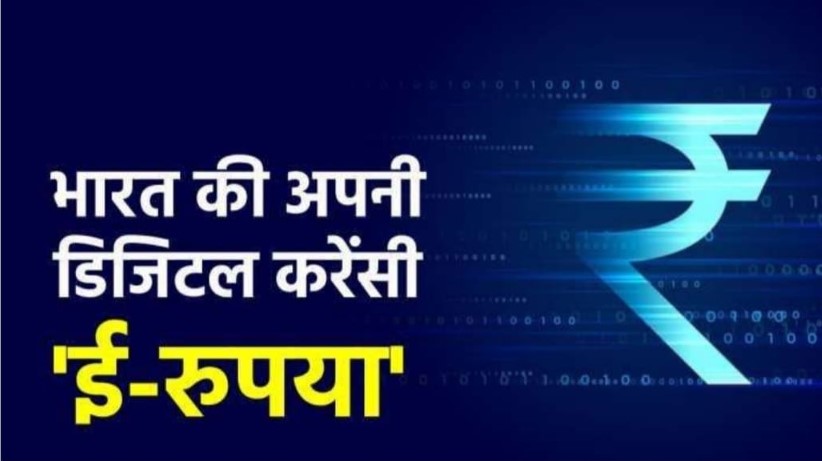
How much e-rupee is needed
- March 14, 2023
- 0
The payment infrastructure has changed a lot over the years. India is a leader in creating a digital payment system. The game changer in this sector has been the Universal Payments Interface (UPI) which acts as a real-time payment system and can facilitate instant transfer of funds between two banks using a mobile device.
Using this platform, apps like Google Pay, Paytm and PhonePe have popularized digital payments tremendously. Although despite digitization, the use of cash has not reduced in India.
The benefits of introducing a CBDC should also be assessed in this context. The arguments put forth by the RBI to justify the adoption of e-rupee can be classified into three parts namely, impact on monetary and financial systems, impact on payment infrastructure and impact on welfare policies.
e-Rupee can make the monetary system more efficient and financial markets more stable in a number of ways. Firstly, this can be done by reducing the cost of cash management. The cost of cash management in India is very high. The introduction of CBDC will help in reducing this as the marginal cost will come down.
Another way in which e-Rupee will help the monetary system is through digitization. Cash is widely used in India for low value transactions. These transactions can be done in e-Rupee if the identity of the transactions can be properly masked.
Financial stability in the economy will also increase as E-Rupee will become an alternative to crypto assets. This will give risk free virtual currency to the public and with this option people can avoid the volatility of private virtual currency.
e-Rupay will provide a better two way payment infrastructure. First, it will help the domestic payment system by providing an additional channel. It also provides payment services outside the commercial banking system. This can diversify the range of payment options, especially for e-commerce. Second, it helps the international payments infrastructure by making cross-border transactions faster and cheaper.
Since capital is sent to India from many parts of the world, international transaction costs affect us significantly. It can also reduce complexities in cross border payments which is important for international trade.
e-Rupee will also do welfare of the poorer sections by making it accessible to all. It will also make financial services more accessible to the unbanked and under banked population. As an offline option, transactions can be done without internet with e-Rupay. It will ensure its reach in areas with low internet or no internet connectivity.
Furthermore, by becoming a digital identity of the unbanked population in the financial system, e-Rupay can facilitate credit access to these people.
Unless e-rupee is widely used, reducing the cost of cash handling, promoting digitization, or replacing private capital, especially in retail, will not be of much importance. However, other arguments are on stronger grounds. Even with limited usage, e-Rupee can make payment infrastructure more efficient. In the domestic sector, it can do so by complementing the UPI infrastructure.
ई-रूपये की कितनी जरूरत
पिछले कुछ वर्षों में भुगतान के बुनियादी ढांचे में काफी बदलाव आया है। भारत डिजिटल भुगतान प्रणाली तैयार करने में अग्रणी है। इस क्षेत्र के खेल में बड़ा बदलाव लाने वाला यूनिवर्सल पेमेंट इंटरफेस (यूपीआई) रहा है जो रियलटाइम भुगतान प्रणाली के रूप में कार्य करता है और यह मोबाइल उपकरण का इस्तेमाल कर दो बैंकों के बीच पूंजी के तात्कालिक हस्तांतरण को सुगम कर सकता है।
इस मंच का इस्तेमाल करते हुए गूगल पे, पेटीएम और फोनपे जैसे ऐप ने डिजिटल भुगतान को जबरदस्त तरीके से लोकप्रिय बनाया है।
हालांकि डिजिटलीकरण के बावजूद भारत में नकदी का इस्तेमाल कम नहीं हुआ है।
इस संदर्भ में सीबीडीसी शुरू करने के फायदे का भी आकलन किया जाना चाहिए। ई-रूपया अपनाने की प्रक्रिया को सही ठहराने के लिए आरबीआई की तरफ से दिए गए तर्कों को तीन हिस्से में वर्गीकृत किया जा सकता है, मसलन मौद्रिक और वित्तीय प्रणालियों पर प्रभाव, भुगतान बुनियादी ढांचे पर प्रभाव और कल्याणकारी नीतियों पर प्रभाव।
ई-रूपया मौद्रिक प्रणाली को अधिक सक्षम और वित्तीय बाजारों को कई तरीकों से अधिक स्थिर बना सकता है। सबसे पहले, नकदी प्रबंधन की लागत कम करके ऐसा किया जा सकता है। भारत में नकदी प्रबंधन की लागत काफी ज्यादा है। सीबीडीसी की शुरूआत करने से इसे कम करने में मदद मिलेगी क्योंकि सीमांत लागत कम हो जाएगी।
दूसरा तरीका, जिससे ई-रूपया मौद्रिक प्रणाली के लिए मददगार साबित होगी वह है डिजिटलीकरण। भारत में कम मूल्य वाले लेन-देन में नकदी का काफी इस्तेमाल किया जाता है। ये लेन-देन ई-रूपये में किए जा सकते हैं अगर लेन-देन करने वालों की उचित तरीके से पहचान छिपाई जा सके।
अर्थव्यवस्था में वित्तीय स्थिरता भी बढ़ेगी क्योंकि ई-रूपया, क्रिप्टो परिसंपत्तियों का विकल्प बनेगी। यह जनता को जोखिम मुक्त वर्चुअल मुद्रा देगा और इस विकल्प से लोग निजी वर्चुअल मुद्रा की अस्थिरता से बचे रह सकते हैं।
ई-रूपया दो तरह से बेहतर भुगतान ढांचा मुहैया कराएगा। पहला, यह एक अतिरिक्त माध्यम देकर घरेलू भुगतान प्रणाली में मदद करेगा। यह वाणिज्यिक बैंकिग प्रणाली के बाहर भी भुगतान सेवाएं प्रदान करता है। यह भुगतान विकल्पों की सीमा में विविधता ला सकता है, खासतौर पर ई-कॉमर्स के लिए। दूसरा, यह सीमा पार लेनदेन को तेजी से और किफायती बनाकर अंतरराष्ट्रीय भुगतान के बुनियादी ढंाचे में मदद करता है।
चूंकि भरत में दुनिया के कई हिस्सों से पूंजी भेजी जाती है ऐसे में अंतरराष्ट्रीय लेनदेन की लागत हमें काफी प्रभावित करती है। यह सीमा पार भुगतान में जटिलताओं को भी कम कर सकता है जो अंतरराष्ट्रीय व्यापार के लिए महत्वपूर्ण है।
ई-रूपया सब तक पहुंच के माध्यम से गरीब वर्गों का भी कल्याण करेगा। यह बैंकरहित और बैंक तक कम पहुंच वाली आबादी के लिए भी वित्तीय सेवाएं अधिक सुलभ बनाएगा। ऑफलाइन विकल्प के रूप में ई-रूपया से इंटरनेट के बिना भी लेनदेन किया जा सकेगा। कम इंटरनेट या बिना इंटरनेट कनेक्टिविटी वाले क्षेत्रों में इसकी पहुंच सुनिश्चित होगी। इसके अलावा, वित्तीय प्रणाली में बैंक सेवाओं से महरूम रहने वाली आबादी की डिजिटल पहचान बनने से, ई-रूपया इन लोगों को ऋण उपलब्धता की सुविधा दे सकता है।
जब तक ई-रूपये का पर्याप्त इस्तेमाल नहीं होगा तब तक विशेष रूप से खुदरा रूप में नकदी प्रबंधन की लागत कम करना, डिजिटलकरण को बढ़ावा देना या निजी पूंजी की जगह इसका इस्तेमाल उतना महत्त्वपूर्ण नहीं होगा। हालांकि, अन्य तर्क मजबूत आधार पर हैं। सीमित उपयोग के साथ भी ई-रूपया भुगतान के बुनियादी ढांचे को अधिक प्रभावी बना सकता है। घरेलू क्षेत्र में, यह यूपीआई बुनियादी ढांचे का पूरक बन ऐसा कर सकता है।
































































